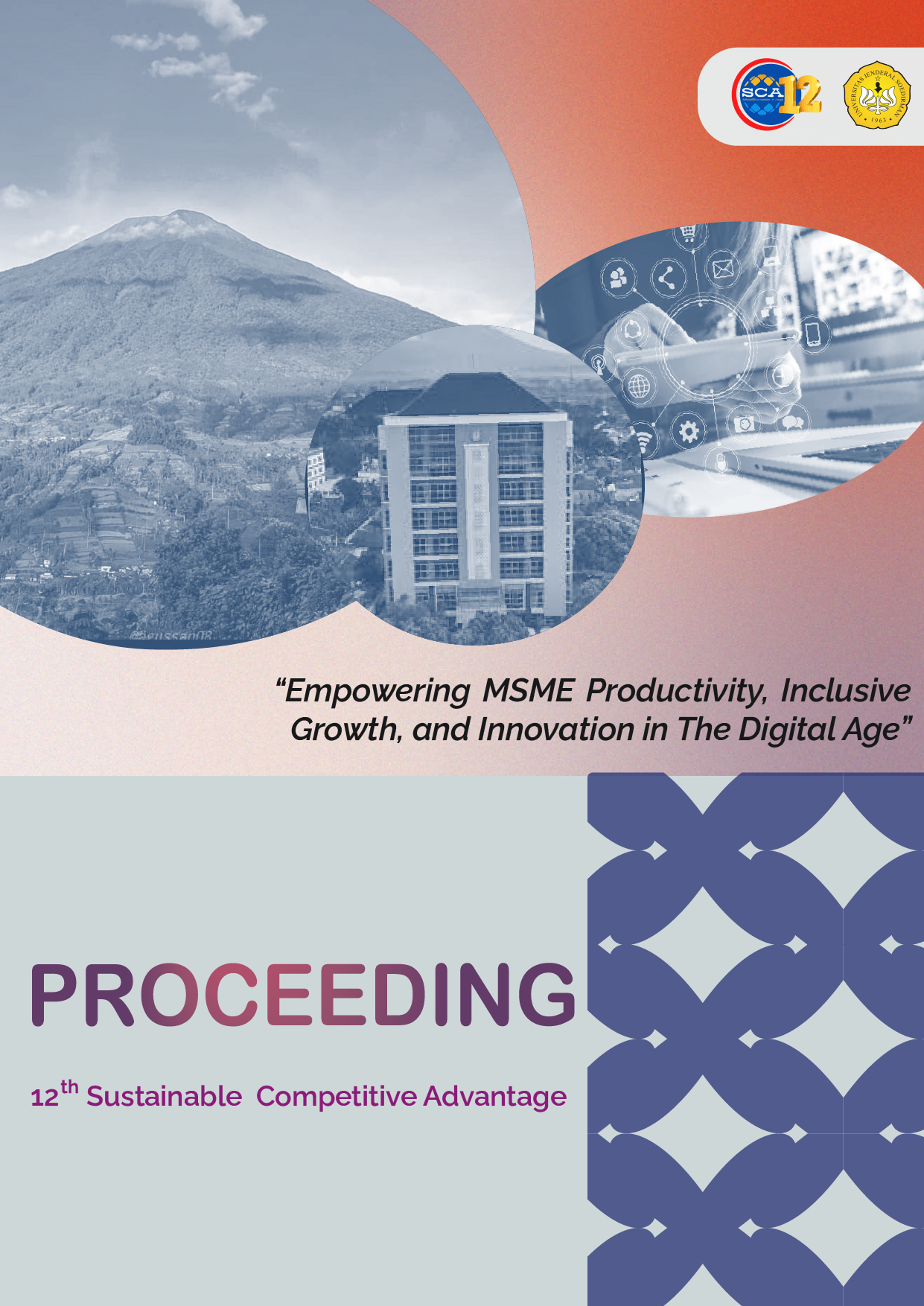Analysis Of Doctor's Workload In Optimization Of Manpower Utilization In RSI Muhammadiyah Singkil
Abstract
One indicator of the success of an effective and efficient hospital is the availability of sufficient human resources with high quality, professional in accordance with the functions and duties of each personnel. One method in planning the needs of health workers in the agency is to calculate the workload.calculation can be done using the Workload Indicators of Staffing Needs (WISN) method based on the workload of personnel. This study aims to determine the needs of doctors using the Workload Indicators of Staffing Need (WISN) method at the Singkil Muhammadiyah Islamic Hospital. This research method uses descriptive quantitative with an observational approach. This research was conducted in April-May 2022. The sample of this study was all doctors at the Singkil Muhammadiyah Islamic Hospital. Based on the results of the study, it was found that the workload of doctors at Islamic Hospital was high (WISN ratio <1). So the hospital experienced a shortage of doctors. The results of this study are expected to be input, especially for the hospital in planning health workers, especially doctors.
Keywords: Workload, WISN doctors.
References
Brady, A.-M. et al. 2007. Measuring the workload of community nurses in Ireland: a review of workload measurement systems. Journal of nursing management 15(5) : 481–489.
Departeman Kesehatan RI (2004). Surat Keputusan Mentri Kesehatan No.81/MENKES/SK/I/2004 tentang Penyusunan Perencanaan Sumber Daya Manusia Kesehatan di Tingkat Propinsi. Kabupaten/Kota serta Rumah Sakit. Departemen Kesehatan Republik Indonesia, Jakarta.
Doulati, S.P. et al. 2013. The Assessment of Needed Workload for Manpower Approximation in Health Houses in Iran ̳ s Villages. European Journal of Scientific Research 114(1): 139–148.
Giammona, S. et al., 2016. Original Paper Nursing Workload and Staff Allocation in an Italian Hospital : A Quality Improvement Initiative Based on Nursing Care Score. Journal Applied Nursing Research, 7(2), pp.420–427.
Herman dan Hasanbasri, M. 2008. Evaluasi Kebijakan Penempatan Tenaga kesehatan di Puskesmas Sangat Terpencil di Kabupaten Buton. Jurnal Manajemen Pelayanan Kesehatan 11(03): 103–111.
Kabene, S.M. et al. 2006. The Importance of Human Resources Management in Health Care: A Global Context. Human resources for health 4: 20.
Kementerian Kesehatan RI. 2013a. Data Dasar Puskesmas.Pusat Data dan Informasi Kementerian Kesehatan. Jakarta.
Kementerian Kesehatan RI. 2013b. Pedoman Pelaksanaan Analisis Beban Kerja DI Lingkungan Kementerian Kesehatan. Sekretariat Jenderal Kementerian Kesehatan. Jakarta.
Kementerian Kesehatan RI. 2013c. Pengembangan dan Pemberdayaan SDM Kesehatan dalam Persiapan Pelaksanaan JKN. BPPSDM Kesehatan. Jakarta.
Kementrian Kesehatan RI. 2013d. Peran BPPSDM Kesehatan dalam Menghadapi JKN. BPPSDM Kesehatan. Jakarta.
Kurniati, A. dan Efendi, F. 2012. Kajian Sumber Daya Manusia Kesehatan Di Indonesia. Editor Abdurrachman. Salemba Medika. Jakarta.
Laksono, A.D., WidodoJ, P. dan Mulyono, I.M. 2012. Analisis Kebijakan Ketenagaan, Sebuah Formulasi Kebijakan Ketenagaan Dokter Umum. Cetakan Pertama. Health Advocacy. Surabaya.
Mardiyah, Qamariyah, Lailatul, Aziz, A.A., 2015. Pemberdayaan Guru Madrasah Ibtidaiyah Melalu Tranformasi Manajemen Mutu Suber Daya Manusia (SDM) Guna Meningkatkan Mutu Madrasah Se-Kecamatan di Kabupaten Jombang. , pp.1–24
Mcquide, P.A. & Forster, N., 2015. Applying the workload indicators of staffing need ( WISN ) method in Namibia : challenges and implications for human resources for health policy. Journal Human Resources for Health.
Mohamed, N.S. dan Hameed, A. 2015. The Impact of Human Resources Managemen on Healthcare Quality. International Journal of Managemen (IJM) 6(I): 603–612.
Mugisha, J.F. & Namaganda, G., 2014. Using The Workload Indicator Of Staffing Needs ( WISN ) Methodology To Assess Work Pressure Among The Nursing Staff Of Lacor Hospital Introduction. Health Policy and Development, 6(1), pp.1–15.
Napirah, M.R. & Sulistiani, A.O., 2015. Analysis of The Optimal Number of Staff Needed Using Workload Indicator of Staffing Needed (WISN) Method in Laboratory Unit of Public Hospital Atapura Palu. Public Health of Indonesia, 1(1), pp.1–8.
Oetelaar, W.F.J.M. Van Den et al., 2016. Balancing nurses ’ workload in hospital wards : study protocol of developing a method to manage workload. Journal Human Resources for Health, pp.1–11.
Rauhala, A. dan Fagerström, L. 2007. Are Nurses‘ Assessments of Their Workload Affected by Non-Patient Factors? An analysis of the RAFAELA System. Journal of nursing management 15(5): 490–499.
Rusli, Y., Nusri, T.M. dan Farich, A. 2013. Analisis Beban Kerja Dokter dan Perawat di Poli Umum Puskesmas Kedaton Kota Bandar Lampung dengan Metode Workload Indicator Staff Needs (WISN). Jurnal Dunia Kesmas 2(1).
Ryu, H.-S. et al. 2003. A workload analysis of a visiting nursing service based on a health center in Seoul]. Taehan Kanho Hakhoe chi 33(7): 1018–27.
Sari, SylviRinda, 2021. Evaluasi Manajemen Obat di Instalasi Farmasi Rumah Sakit Universitas Sumatera Utara.[Magister Thesis, Universitas Sumatera Utara].Universitas Sumatera Utara Repository.
Satish, S.N., 2015. Gap Analysis in Staffing Using Workload Indicators of Staffing Need Method in A Tertiary Care Teaching Hospital. Journal Human Resources for Health, (2277), pp.376–377
Shivam, S. et al., 2014. Nursing Personnel Planning for Rural Hospitals in Burdwan District, West Bengal, India, Using Workload Indicators of Staffing Needs. Journal of Health, Population and Nutrition, 32(4), pp.658–664.
Wahyuningsih, H., 2014. Analisis Kebutuhan Tenaga Perawat Pelaksana dengan Metode Workload Indicator Staff Need (WISN) di Ruang Rawat Inap Flamboyan Krakatau Medika Hospital Tahun 2014. Universitas Indonesia.
WHO. 2010. Workload Indicator Of Staffing Need. WHO Press. Geneva

